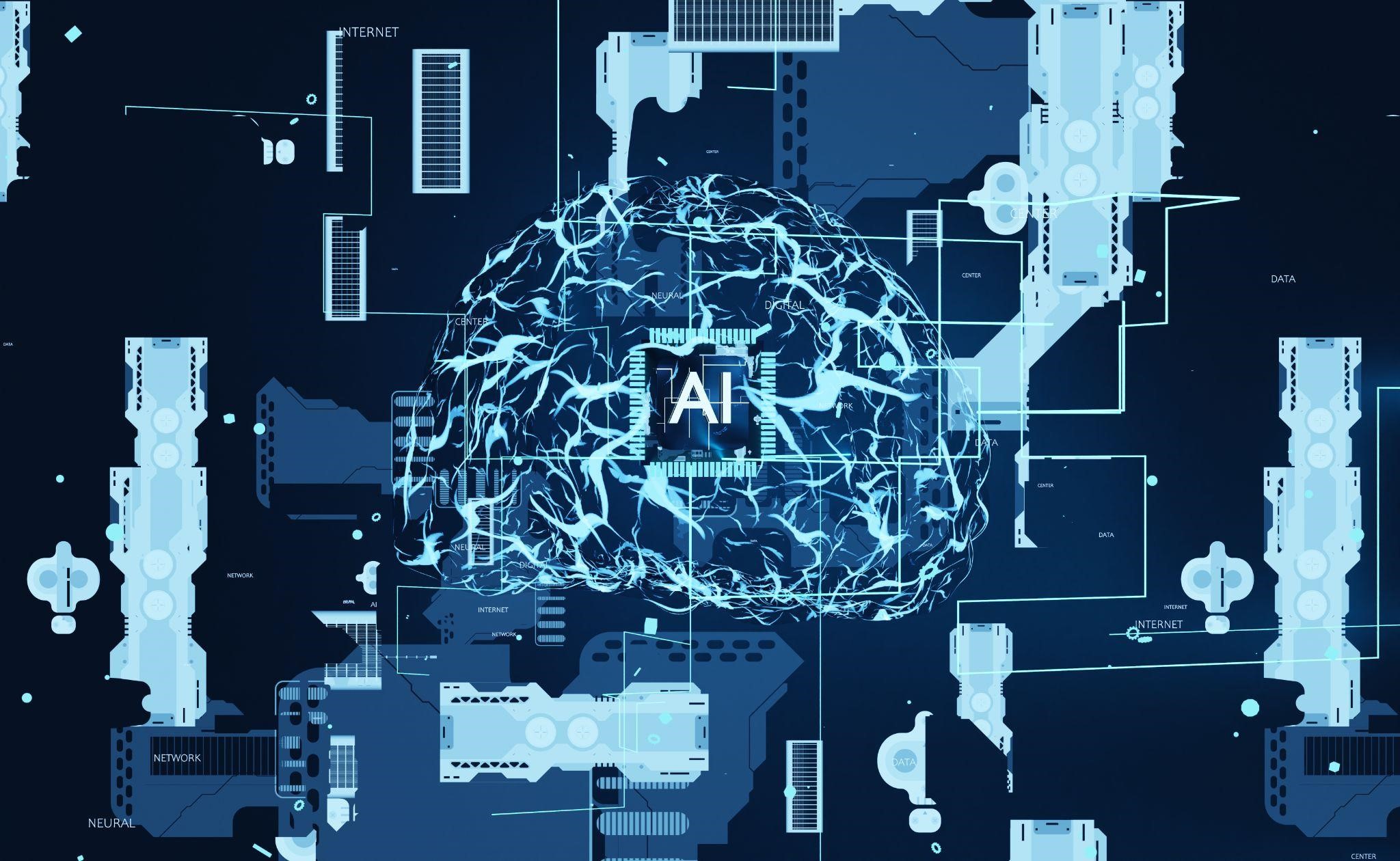Artificial Intelligence in mobile apps raises user experience to a new level. This integration makes a whole bunch of everyday processes faster and simpler. AI assists in science, transportation, education, medicine, and many other fields. Regular users often experience personalized recommendations and app improvements created by AI technology. AI also makes our everyday apps cleverer, more helpful, and more efficient.

This article further discusses AI's role in mobile apps and the main benefits of integrating it in the first place. Read on to find out how to incorporate AI into an app most efficiently at this point in time and progress.
AI in Mobile Apps: the Power of Intelligence
The main goal of AI in smartphones is to boost user’s comfort and effectiveness. AI helps to adapt the device according to personal needs without effort.
Personal approach
AI studies user preferences and behavior habits. It suggests content and products according to one’s searches and interactions. AI creates a more user-centric, personalized space this way. Push windows, messages, and notifications based on preferences attract more attention. A personal approach improves effectiveness and engages users much better. AI also recognizes patterns unusual for specific user behavior, helping to illuminate possible security issues and take action in time.
Recognition
- Facial recognition
This now default feature improves smartphone security and protects it from strangers’ access.
- Speech recognition
Virtual assistants recognize voice inputs and react to voice commands. They save tons of time by excluding typing. Voice control also opens more possibilities for disabled people.
- Image analysis
AI-enabled applications can analyze objects in a picture and recognize them. This feature helps to find the original picture or mark people in the image. It can also help an app react to requests during image searches.
Virtual customer support
A competitive, fast-growing market of services and products requires 24/7 technical support. Human resources cannot cover this endless shift, but virtual assistants can work downtime-free. Chatbots are available around the clock and efficiently respond to customers' requests on common issues.
Translation
Machine translation helps to interpret a text from a foreign language to a familiar one. But the one downside of AI translation (which translates things word for word all too often) is that it tends to ignore the context. AI is growing and gradually fixing this problem, however. It learns to understand less obvious clauses and improves the tone of voice detection for native quality of interpretation.
These features are only a part of AI possibilities that affect everyday user’s activity. But even this small glance shows the variety of AI's abilities for life improvements.
Advantages of Integrating AI with Mobile Apps
AI integration brings the user experience to a new, smart level. It makes applications more user-oriented, overall effective, and responsive to human requests.
Vital benefits of AI integration:
- Personalized offers
AI generates offers (e.g., ecommerce promotions and store products) according to personal preferences and history to provide suitable products.
- Increased user engagement and retention
Virtual assistants and chatbots grant 24/7 tech support to increase customer retention and engagement.
- Process optimization and automation
Detection and analysis of preferences help to show the most relevant information. Automated processes reduce human involvement and help to concentrate on other, less routine-induced tasks.
- Data insights
This feature is especially efficient for business processes. It analyzes customer behavior along with tons of other business intelligence and data that can improve company-wide strategy in many ways.
- Cost reduction
Reducing human requirements in customer support makes the processes autonomous and efficient. Such an approach saves costs and time for companies.
These features make AI in mobile apps valuable, efficient, and cost-saving. Users prefer more personalized, simple, and user-oriented interfaces that improve their experience. AI covers their needs in no time.
More and more companies involve AI implementation in their everyday work processes. It is not a special offer anymore, but the expectation for comfort and fast application usage. AI improves productivity, staff and user learning processes, general efficiency, and accuracy.

AI Integration Guide
Now, when the benefits are obvious, let’s find out how to integrate AI into your applications. These simple steps will help you achieve the most productive and suitable implementation.
1. Identify a niche and choose your directions
AI in apps is an extremely helpful and demanded thing, but to make this upgrade effective, you need to set your goals first: Define for yourself what you would like to improve in a business process. What exactly do you want to squeeze out of an AI? What type of help must it adjust? For example, chatbots can improve the work process for customer support. This way, a company can ensure faster responses to customers’ requests.
Decide if you prefer to create your own model or choose one from existing AI offers. The companies where AI in mobile apps is not the main business focus consider the second option.
2. Choose the right type
Artificial intelligence in mobile applications can power several different types of tools. You need to choose the most suitable technology specifically for your business.
The most relevant Artificial Intelligence types include:
- Generative AI
This technology is the most effective for creative directions. It learns from existing data and generates texts (GPT), images, audio, and video files (GAN).
- Image Recognition (Image Classification)
This tool inspects, identifies, and classifies pictures according to predefined classifications. Image recognition serves to recognize faces for security tasks. It can use images of products for image search. Some medical apps and programs use image recognition to detect anomalies during research.
- Voice Recognition
Voice recognition helps to transform speech into text. Voice access and virtual assistants with voice controls have long become a basic feature in almost every other smartphone out there.
- Machine Learning
The mission of ML is to develop algorithms for data analysis and pattern research. Based on processed information, ML adjusts and provides better results. This tool is useful for data analysis, trend research, and forecasting. It also analyzes customer behavior predictions and possible risks.
- Natural Language Processing
NLP ensures understanding and interpretation of human language by machine. This tool helps AI not only see and recognize text but also understand and interpret it. This way, the machine understands user intentions better. It makes generated text look more human-like during machine translation and generation. NLP-enabled apps can also classify texts, organize them, and extract any required information from them.
3. Assemble your dream-team
To integrate artificial intelligence into your application, you need a team of specialists. Each member performs a specific role to cover all necessary parts of the process.

The most sought-after team members for AI integration are:
- Project managers
A manager allocates resources, checks possible risks, and coordinates with all team members. They control the whole workflow and keep the budget and deadlines in check.
- Data scientists
These specialists develop and prepare models for integration into your application. Their task is to create smart algorithms for efficient prediction and decision-making.
- Data engineers
Data engineers design and support the data infrastructure of the project. They create a model and control the operation during the whole integration and post-integration, too.
- Machine learning engineers
This part of the team can enhance data analysis capabilities. It handles the development of prototypes into innovative solutions. Engineers teach machines how to make complex strategic decisions.
- Computer vision developers
Specialists in this field provide integration of AI for image and video recognition. The approach concentrates on visual processing requirements.
- Designers
UI/UX designers handle the visual appearance of the application. They guarantee the simplicity and comfort of the app after integration. Their mission is to provide user-friendly design for a new set of functions.
- Software developers
Software development specialists combine skills in engineering, coding, and design. Their task is to develop software and add AI to its components. They make sure that AI operates the right way and that users get access to all required functions.
Depending on your goals, you may need all types of specialists or only part of them. EXB experts create teams for specific needs. In any case, timely hired, specialized AI developers assist with successful integration and effective AI operation.
4. Prepare your data
Collected data will become a base for your AI functionality. You may need to combine internal and open-source information. The more you can collect — the better. If you have too little data in your internal sources, public databases will help. Google Analytics, Web log files, or Hotjar track user behavior and provide precious insights. They collect information about location, duration of visits, and quantity of page views.
After you collect all possible data, data scientists come into play. Not any data works for your purposes, as the quality has a significant meaning. Specialists research information, extract valuable data, structure it, make it readable, and analyze it. The scientists also clean data, standardize formats, and ensure the anonymity of sensitive information.
5. Train your AI

Now, it’s time for your expert team to train the AI. At first, you feed data into your existing AI model. AI learns how to adapt and adjust itself according to provided parameters. AI needs to learn to make predictions and decisions with the help of similar data patterns.
After the first step of training, fine-tune your model. Adjustments must be made to the internal parameters of the AI's model. This training session gives the model instructions for future goal fulfillment. Fine-tune the process to improve efficiency, quality, and accuracy
6. Integrate and test
AI integration means the installation of specialized APIs (Application Programming Interface) that will help your application interact with the AI model. This type of interface connects different parts of software for data exchange. After integration, you start testing your app. It’s crucial to lead AI through various scenarios until you are sure that it works as expected.
Check all individual components. Make sure there are no conflicts between parts of the app. See to it that the application matches all user requirements and expectations. AI should function accurately to handle all types of cases and inputs. Pay attention to the time of response as well.
7. Monitor and optimize
Even after integration and testing, you still need to check on AI functionality. Monitoring helps make sure AI in mobile apps works the way it should. It will also show how well AI adapts to new scenarios, including new data inputs and user behavior patterns.
Essential factors to monitor:
- Response speed
- Accuracy of predictions and decisions
- Signs of degradation
- Unexpected or not suitable behavior of AI
- User engagement with the new AI functionality
Continuous monitoring will provide more insights and tips for better optimization. Based on the collected data, you may choose which features of the AI model need improvements. Adjust the parameters to get better results and meet changing user needs.
Challenges in AI Integrations into Apps
Implementing AI into an app brings you not only improvements but some challenges on your way as well. Prepare yourself for them, and remember: there is always a solution to any difficult task. Some of the challenges to prepare for include the following.

Dependence on third parties
Incorporating AI, you may rely on external platforms and services. It’s a common choice as they are easy to adopt and use. However, readymade solutions cannot offer extensive customization possibilities. The platforms can change their price range. Also, if the governing platform faces any issues, application functions may face them too.
The best way to deal with such a challenge is to make regular data backups. Also, keep an eye on any changes in service terms, pricing, and platform functions.
Data
Data is the source of AI functionality. Its quality and availability are essential for proper AI functioning. To get high-quality data, you should rely on more than one channel. Use several data sources.
An experienced team of software developers would ensure that you have high-quality data. Such cooperation will enable the coverage of all possible underlying issues, as well.
Resources
Training an AI model from scratch can be intense. The cost can reach thousands of dollars. Hiring specialists, AI creation and training, and data gathering are demanding tasks that require both money and time.
Using pre-trained models makes everything way easier, saving time and costs. You will have to fine-tune and customize. But the resulting AI will respond to the needs, requirements, and goals of your business. This comes out more cost-efficient in the long run.
These are three main challenges you can face. They may make some major obstacles on your road to integration. A highly qualified team can reduce possible difficulties. Consult will help to make the process faster and easier.
Tips for Integrating AI in a Mobile App

If you are still thinking about how to add AI to your app, you should take into consideration a few basic tips:
- Choose the correct AI tools and technologies.
The more - the better is not always a solution. Keep in mind what is essential for your goals and business.
- Integrate AI features seamlessly.
Don’t rush, make sure that every feature works properly and the AI model is well-trained.
- Collaborate with AI developers.
An experienced team can save you time and resources, minimizing risks and issues.
These few tips will lead you to simpler and more comfortable AI integration.
Bottom Line
AI integration into your mobile app is a great step toward innovative technologies. It has become a proven way to improve your company's productivity, automation, and efficiency. Your customers will get a new, enhanced experience. Target promotion will attract attention to the points you need.
So, it’s time to decide how to integrate AI into your mobile app and what kind of AI you want to use. Choosing the right option will set the groundwork for reaching specific goals. Every step of AI integration improves AI quality, responsiveness, and cleverness. Smart AI is a key to satisfied users and successful businesses. Need developers’ help? Let’s have a call to discuss your project.
F.A.Q
The main benefits include personalized user experiences, enhanced security through facial and speech recognition, virtual customer support, process automation, data insights, and cost reduction. AI makes apps smarter, more efficient, and user-centric.
AI studies user preferences and behavior to suggest content and products based on individual searches and interactions. This personalization improves user engagement and effectiveness by providing a tailored experience.
Key AI technologies include generative AI, image recognition, voice recognition, machine learning, and natural language processing (NLP). These technologies power features like facial recognition, virtual assistants, and data analysis.
AI enhances security through features like facial recognition to prevent unauthorized access, speech recognition for secure voice commands, and pattern recognition to detect unusual user behavior that might indicate security threats.
Steps include identifying the niche and goals, choosing the right AI type, assembling a specialized team, preparing data, training the AI, integrating and testing the AI, and continuous monitoring and optimization.
Challenges include dependence on third-party platforms, ensuring high-quality and available data, and the high costs and resources required for training AI models. These challenges can be mitigated with regular data backups, multiple data sources, and using pre-trained models.
Collaborating with AI developers is crucial as they bring expertise in AI technology, ensuring proper implementation, minimizing risks, and optimizing AI functionality. Their experience helps in saving time and resources while achieving the desired outcomes.



